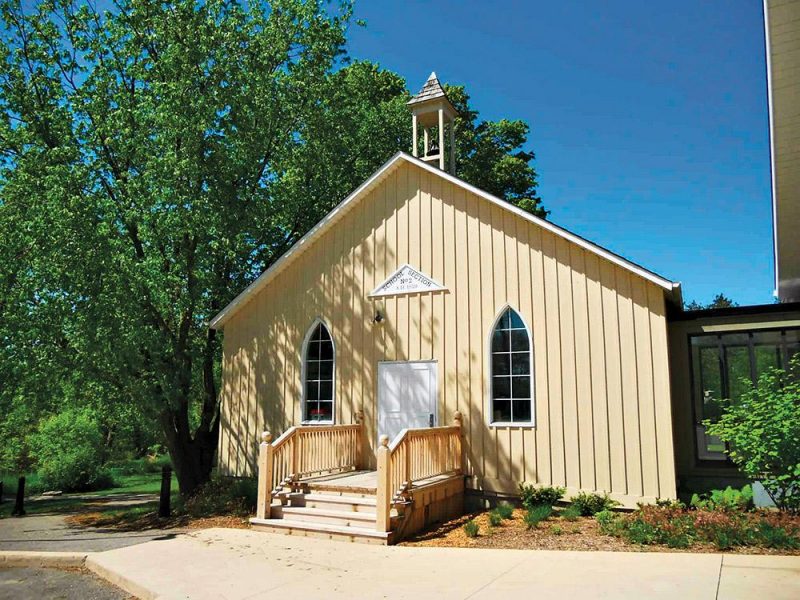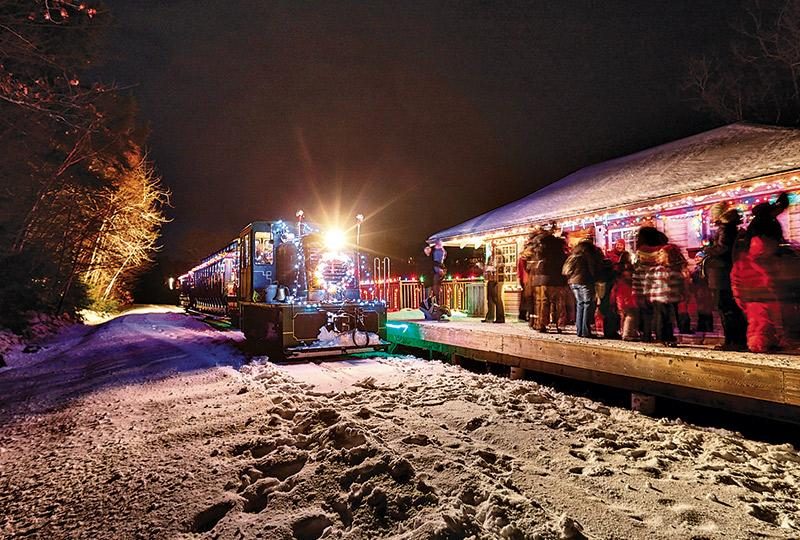
Colonial Williamsburg is an Historic Oasis
By Jane Muller
The music of the fife and drum band sets in motion an impromptu parade of visitors interspersed with staff dressed to comply with the 18th century town that is Colonial Williamsburg, Virginia. The crowd, along with the odd oxen team or horse-drawn carriage, marches down the street reserved for pedestrians to the courthouse, one of 88 original 18th century and early 19th century structures on 301 acres.
The march ends on the vast lawn behind the courthouse. The crowd forms a line on either side, ready for the firing of muskets and canons followed by a rousing speech delivered from horseback. The rider and his steed burst onto the field and the audience, stirred by his talk of independence for the Union, respond on cue with a cheer of ‘’Huzzah.’’
The experience of Colonial Williamsburg and its counterparts Jamestown and Yorktown, provides an appreciation for a big nation that’s big on its history and spends big to ensure its story survives.
Many of the children trying their hand at period trades, chores and games are dressed for the part, boys wearing three-cornered hats and girls with wide-brimmed straw hats trimmed with pretty ribbon. Some are fully decked out in outfits purchased at one of the many shops or rented for the day. The boys’ outfits come complete with a riffle. They are being immersed in a revolutionary time so it’s prudent to have a weapon handy.
It’s stunning to arrive in a town so true to an era. Even the tree-lined roads harken back to earlier times, crossed by arched bridges of red brick.
Colonial Parkway, one of the main routes into and around Williamsburg has been voted one of the ‘‘best drives’’ in the United States. The 23-mile scenic parkway connects the ‘‘historic triangle’’ with Jamestown to the east and Yorktown, about 20 minutes to the west.
Jamestown, located on an island in the James River, was the original English settlement, comprising 104 men and boys, established in 1607. At the James Fort site at Historic Jamestown, are ongoing archaeological digs as well as displays of what has already been discovered. The 17th century church tower and Jamestown Memorial Church are among the few structures still standing but the Voorhees Archaearium houses an extensive display of artifacts as well as several windows to the past in the form of glass floor panels that reveal sections of foundations that have been excavated. A statue of John Smith, the British adventurer looks out over the river.
Just down the road is Jamestown settlement where a walk through the woods takes visitors to the glasshouse. The skill of the artisans working with molten glass will blow you away. The wares of the glass blowers are sold right on site. The two stone kilns look authentic but are fired by natural gas and are much more efficient than the originals that represented one of Virginias’ first industries.
It would take two weeks and the same amount of wood required to build a two-storey home, to melt enough sand, soda ash and shells to form about a dozen bottles. Today, dozens of bottles are produced in one shift, even though traditional methods are employed. The shop is stocked with bottles, mugs, candleholders, vases, delicate pitchers, ink bottles and more in clear, green and plum-coloured glass.
Three 1607 ships, a Powhata Indian village and colonist fort bring to life the story of American’s first English colony at Jamestown Settlement. The story begins indoors at the sprawling museum with generous exhibit spaces that trace how Powhatan Indian, English and African cultures converged in 17th century Virginia. The introductory film ‘‘1607: A Nation Takes Root,’’ is a great starting point for your visit. Each of the three outdoor exhibits is populated by friendly and knowledgeable staff. Just approach any of the costumed interpreters to ask questions or request a demonstration.
The blacksmith was making nails when we stopped by his shop. We witnessed a mouse run around the edge of an Indian shelter as if it knew its role in the story. We had just been told that Indians would have kept a fire going in their homes 24/7 to keep the woven grass shelters from developing mold and to keep mice away. That shelter was definitely in need of a fire. All of the ‘‘houses’’ appeared as they would have 400 years ago, with deer and wolf pelts, some wooden furnishings, cooking fires and implements. At the colonial fort, the same attention to historic detail is evident. While soldiers would not likely have left their helmets and body armor sitting on benches outside, it did make trying it on for a photo convenient.
Down at the river, visitors are allowed to board the ships, which seemed quite small for an ocean voyage. The largest would have carried 70 passengers on the long passage from England.
Our journey back down the Colonial Parkway to Yorktown takes only about a half hour and we’re rewarded at the end by more impressive re-creations including a Continental Army encampment. The historical interpreters describe and depict the daily life of a regiment of soldiers during the last year of the war and sometimes recruit visitors to help with musket drills and serve to on an artillery crew. It’s fun to try on a military coat and explore the soldier’s tents, trying to imagine what their life was like. Yorktown Victory Center’s 1780s farm is part of a museum visit along with on the “Road to Revolution,” an open-air exhibit walkway that traces events leading to the American colonies’ split from Britain.
Not far from with Victory Centre is Riverwalk Landing, a small commercial area featuring great restaurants, shops and a beach where you can put your feet up and relax while the kids splash in the water.
Where to stay:
Williamsburg Woodlands Hotel: It would be pretty hard to beat the ideal location of this hotel since it’s located right next door to the Colonial Williamsburg Visitor Center. That puts you within easy walking distance of Colonial Williamsburg. Shuttles also run throughout the area on a regular basis. The hotel itself has mini golf, outdoor pool, ping-pong table and a fitness centre as well as an onsite restaurant. The suites are ideal for families. Room rates start at $129 and include breakfast.
Where to dine:
Shields Tavern: One of our more memorable experiences was dinner at the historic Shields Tavern in Colonial Williamsburg. It’s so authentic, the wait staff is not allowed to wear watches or tell patrons the time if asked. We were able to coax it out of our server since we didn’t want to miss the evening walking tour “Ghosts Among Us”.
Old Chickahominy House: A great place for breakfast and lunch is Old Chickahominy House, known for its amazing square cut ham biscuits. We loved saying the name “Chickahominy” and enjoyed the southern hospitality.
Side trips:
Busch Gardens, Williamsburg: In stark contrast to the historic areas, Busch Gardens, Williamsburg suits thrill seekers and more laid back visitors as well with its combination of state-of-the-art roller coasters and attractions like the wolves in Wolf Valley and of course the beautiful, lush gardens that line the walkways. There’s a European theme here with the flavour of Germany and the British Isles. Lots of kid-friendly features and of course the famous Clydesdales.
Great Wolf Lodge: The huge indoor water park is fantastic. The rooms are pricey but this is a unique experience. Try renting a cabana in the water park, it gives you a quiet, private place to relax, have a drink and something to eat before heading back down the






